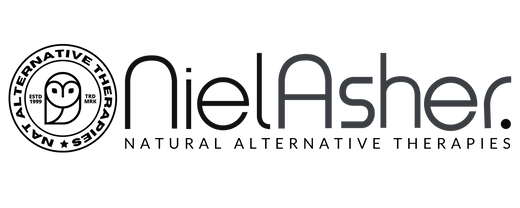Trigger Point Therapy - Understanding and Treating Multifidus
Multifidus Trigger Points Explained
Treating Lower Back Pain - Online Course
The role of the multifidus in producing an extension force is essential to the stability of the lumbar spine
The multifidus is the most medial of the lumbar back muscles, and its fibers converge near the lumbar spinous processes to an attachment known as the mammillary process.
The fibers radiate inferiorly, passing to the transverse processes of the vertebrae that lie two, three, four, and five levels below.
Those fibers that extend below the level of the last lumbar vertebra (L5) anchor to the ilium and the sacrum. The multifidus is considered to be a series of smaller muscles, which are further divided into superficial and deep components.
The role of the multifidus in producing an extension force is essential to the stability of the lumbar spine, as well as functioning to resist forward flexion of the lumbar spine and the shear forces that are placed upon it.
The multifidus muscle also functions to take pressure off the intervertebral discs, so that the body weight is evenly distributed throughout the whole vertebral column.

Multifidus - Trigger Points typically associated with lower back pain
The superficial muscle component acts to keep the vertebral column relatively straight, while the fibers of the deep muscle component contribute to the overall stability of the spine.
Richardson et al. (1999) identified the lumbar multifidus and the transversus abdominis (TVA) as the key stabilizers of the lumbar spine.
Both muscles link in with the thoracolumbar fascia to provide what Richardson et al. refer to as “a natural, deep muscle corset to protect the back from injury.”

As the multifidii contract, it pushes into the thoracolumbar fascia and along with contraction of the transversus abdominis, provides intersegmental stability.

a) The relaxed multifidi muscle in transverse section; b) Co-contraction of the transversus abdominis and multifidi creates a stiffening tension on the thoracolumbar fascia thereby providing intersegmental stability.
Hydraulic Amplifier
Described by Evan Osar (2012), the hydraulic amplifier effect occurs with the contraction of muscles within their fascial envelopes.
All muscles are invested inside fascia and as they contract, push out into the fascia, creating a stiffening around the joint.
In the spine, contraction of the lumbar erector spinae and multifidus within the thoracolumbar fascia creates an extension force, assisting extension of the spine.
When the lumbosacral multifidus contracts, it broadens posteriorly into the lumbodorsal fascia.

Trigger Point Referred Pain Patterns - Multifidus

Trigger Point Referred Pain Patterns - Multifidus and Rotares
(Latin multi, many; findere, to split; rota, wheel)
The multifidus is the part of the transversospinalis group, which lies in the furrow between the spines of the vertebrae and their transverse processes.
It lies deep to the semispinalis and erector spinae. The rotatores are the deepest layer of the transversospinalis group.
ORIGIN
Multifidus: posterior surface of sacrum, between sacral foramina and posterior superior iliac spine.
Mamillary processes (posterior borders of superior articular processes) of all lumbar vertebrae.
Transverse processes of all thoracic vertebrae. Articular processes of lower four cervical vertebrae. Rotatores: transverse process of each vertebra.

Multifidus - Common Trigger Point Sites
INSERTION
Multifidus: parts insert into spinous process two to four vertebrae superior to origin; overall including spinous processes of all vertebrae from 5th lumbar up to the axis (L5–C2).
Rotatores: base of spinous process of adjoining vertebra above.
ACTION
Multifidus: protects vertebral joints from movements produced by the more powerful super cial prime movers. Extension, lateral exion, and rotation of vertebral column. Rotatores: rotate and assist in extension of vertebral column.
NERVE
Dorsal rami of spinal nerves.
BASIC FUNCTIONAL MOVEMENT
Helps maintain good posture and spinal stability during standing, sitting, and all movements.
REFERRED PAIN PATTERNS (SEE DIAGRAMS ABOVE)
Multifidus: localized and anteriorly to abdomen. S1 leads to coccydynia.
Rotatores: localized to medial pain.
INDICATIONS
Deep/persistent low backache, vertebral alignment problems, facilitated segment—localized paraspinal erythema, coccydynia.
CAUSES
Poor posture, playing musical instruments, lying on front with head propped up, poor glasses, upper crossed pattern, kyphosis, scoliosis, wear and tear, cold drafts/ air conditioning, vertebral alignment issues, certain sports (e.g. archery), tight shirt/tie, depression.
DIFFERENTIAL DIAGNOSIS
Angina. Visceral pain. Radiculopathy. Ligamentous, discogenic, sacroiliac. Piriformis. Pathological: aortic aneurysm. Visceral pathology. Space-occupying lesion. Pelvic in ammatory disease.
CONNECTIONS
Pectoralis major.
Find a Trigger Point Professional in your area
Dry Needling for Trigger Points
Certify as a Trigger Point Therapist
NAT Online Trigger Point Courses:
This trigger point therapy blog is intended to be used for information purposes only and is not intended to be used for medical diagnosis or treatment or to substitute for a medical diagnosis and/or treatment rendered or prescribed by a physician or competent healthcare professional. This information is designed as educational material, but should not be taken as a recommendation for treatment of any particular person or patient. Always consult your physician if you think you need treatment or if you feel unwell.

Ready to take your practice to the next level?
Explore which continuing education course is right for you.

















